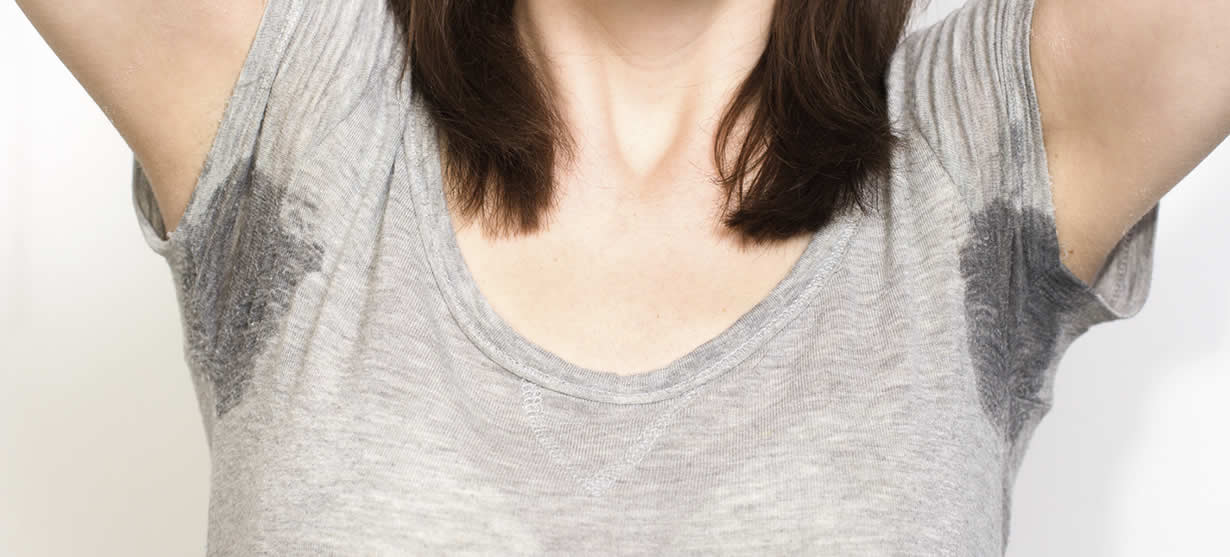
What is hyperhidrosis?
Hyperhidrosis is the medical term meaning excessive sweating. It can be localised or affect the whole body. Dr Hussain understands the huge effect it can have on your well-being and quality of life and always strives to provide the best possible treatment for this condition.
What causes hyperhidrosis?
Localised hyperhidrosis is the most common type of hyperhidrosis affecting certain body sites: the palms, soles, armpits, face and scalp, or a combination of these. The cause is not known.
Generalised hyperhidrosis (affecting the whole body) may be caused by an illness such as an infection, or by hormonal conditions including the menopause, diabetes and an overactive thyroid gland. Some medicines (such as antidepressants) can also cause excessive sweating. Often no cause can be found.
What are the symptoms of hyperhidrosis?
Visible sweat, wet clothes and a clammy handshake can be embarrassing, and can interfere with work and personal relationships. Dr Hussain sees many patients with hand sweating for example which gives them significant problems writing on paper, using keyboards, playing musical instruments and playing sports. There are treatments however that can help.
Can hyperhidrosis be cured?
When there is an underlying cause which can be treated, hyperhidrosis can be cured. Surgical treatment can help some people, but is often associated with serious side effects, so Dr Hussain will not usually recommend this option unless other treatments have failed. Otherwise, the main aim is to control the condition to allow you to get on with your life.
How can hyperhidrosis be treated?
By the time people come to see Dr Hussain they will have tried over the counter antiperspirants. Dr Hussain will take time assessing your condition and discussing with you the options he feels may help you.
- Aluminium chloride is the usual active ingredient in commercially available antiperspirants. Stronger preparations of aluminium chloride can be prescribed for excessive sweating, and are mostly used under the arms but can be used on the hands and feet. However, sore red skin is a common problem. This can be reduced by making sure the skin is completely dry before applying the solution (use a hair dryer for five minutes before application) and by using the treatment less frequently and then trying to build up.
- Solutions of a drug glycopyrrolate can reduce sweating in localised areas but is not readily available and is expensive.
- Iontophoresis is a method of passing a small electric current through areas of skin immersed in a container of water. It is used for the armpits, palms and soles. The treatment needs to be done regularly and lasts 10-20 minutes. Iontophoresis does tend to cause a tingling sensation; if this causes a problem then the current can be reduced. Equipment for home use can be bought on-line.
- Botulinum toxin (“Botox”) can be injected into the skin in very small carefully controlled doses to block the action of the nerves which activate the sweat glands. This treatment usually works very well and is often the treatment of choice offered by Dr Hussain as he has seen the immediate impact it can have on patient’s quality of life. The beneficial effect usually lasts 3-12 month and the treatment can be repeated.
- Endoscopic thoracic sympathectomy may be considered for localised hyperhidrosis when other treatments have failed. It is most useful for severe hyperhidrosis of the palms and face. This is a major operation, performed under general anaesthetic.
- Other surgical methods apply only to the underarm skin, especially when only a small area is involved. They include the removal of a wedge of skin containing the overactive sweat glands, or the scraping away of the sweat glands from a flap of skin or from the underside of the skin. If this is something you are keen to explore, Dr Hussain will guide you through what is involved.
If you have any questions or comments, or if you want to learn more about the services of Dr Walayat Hussain, please call 0113 388 2234 or submit an online form by clicking here.


